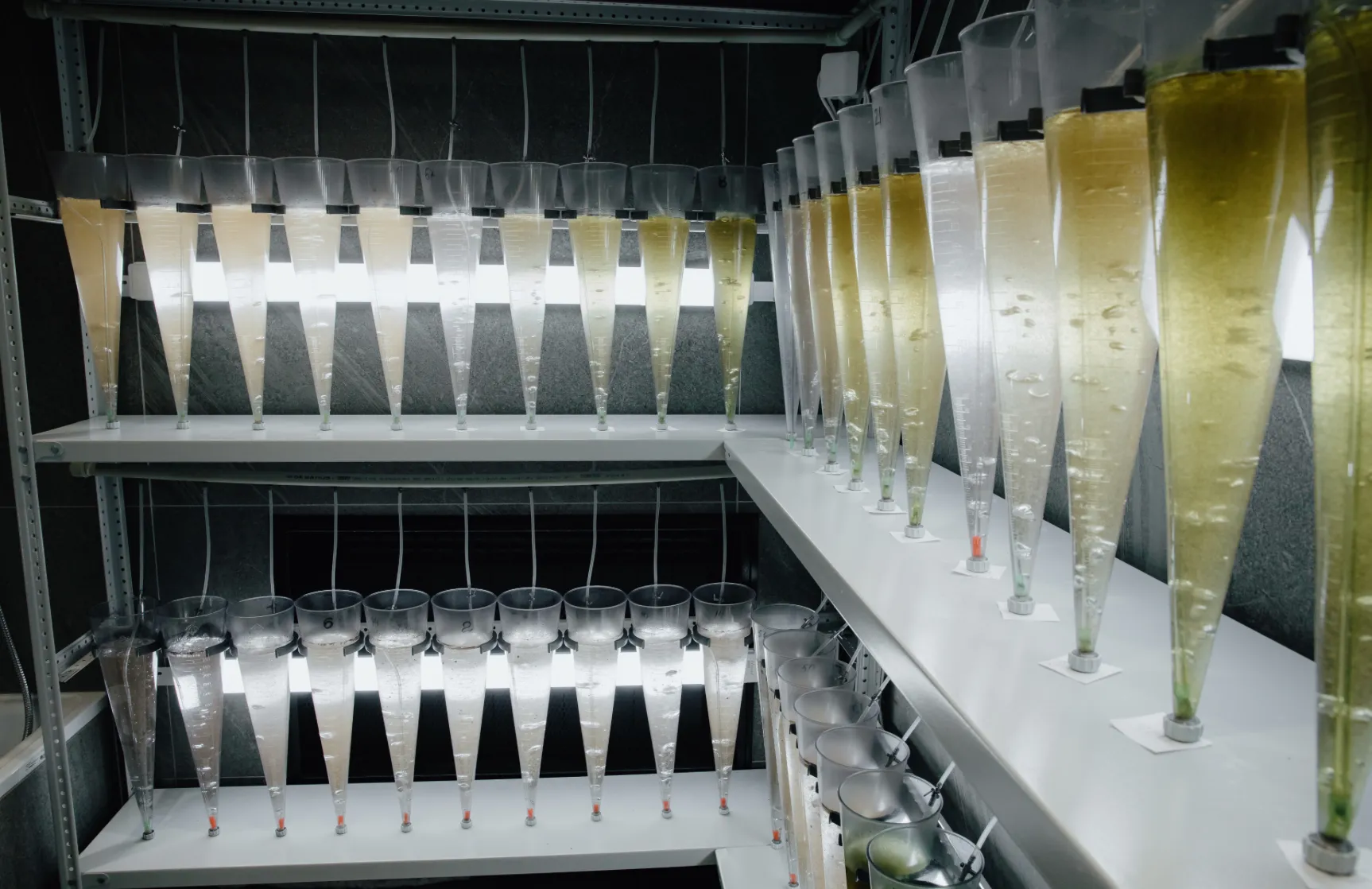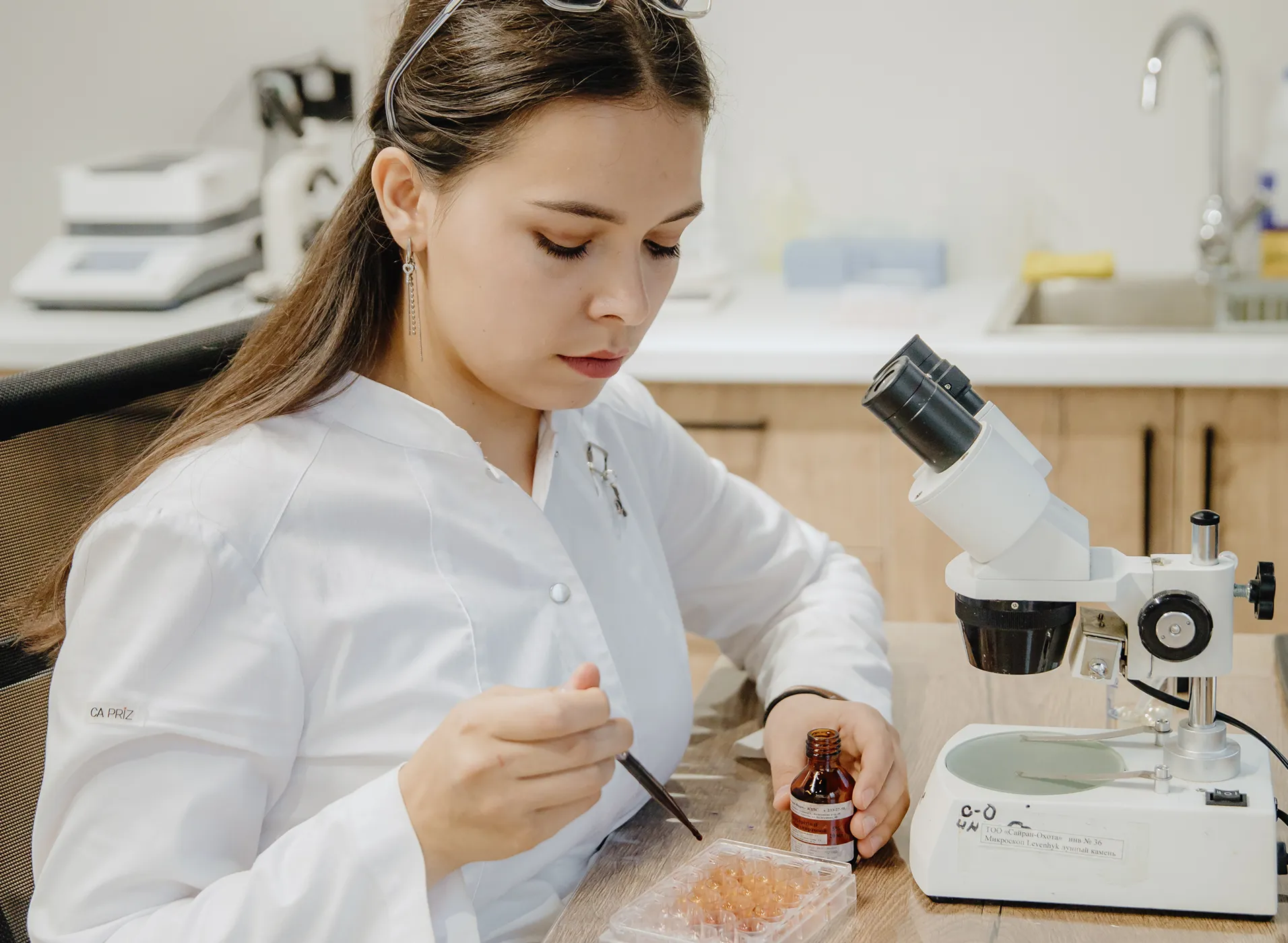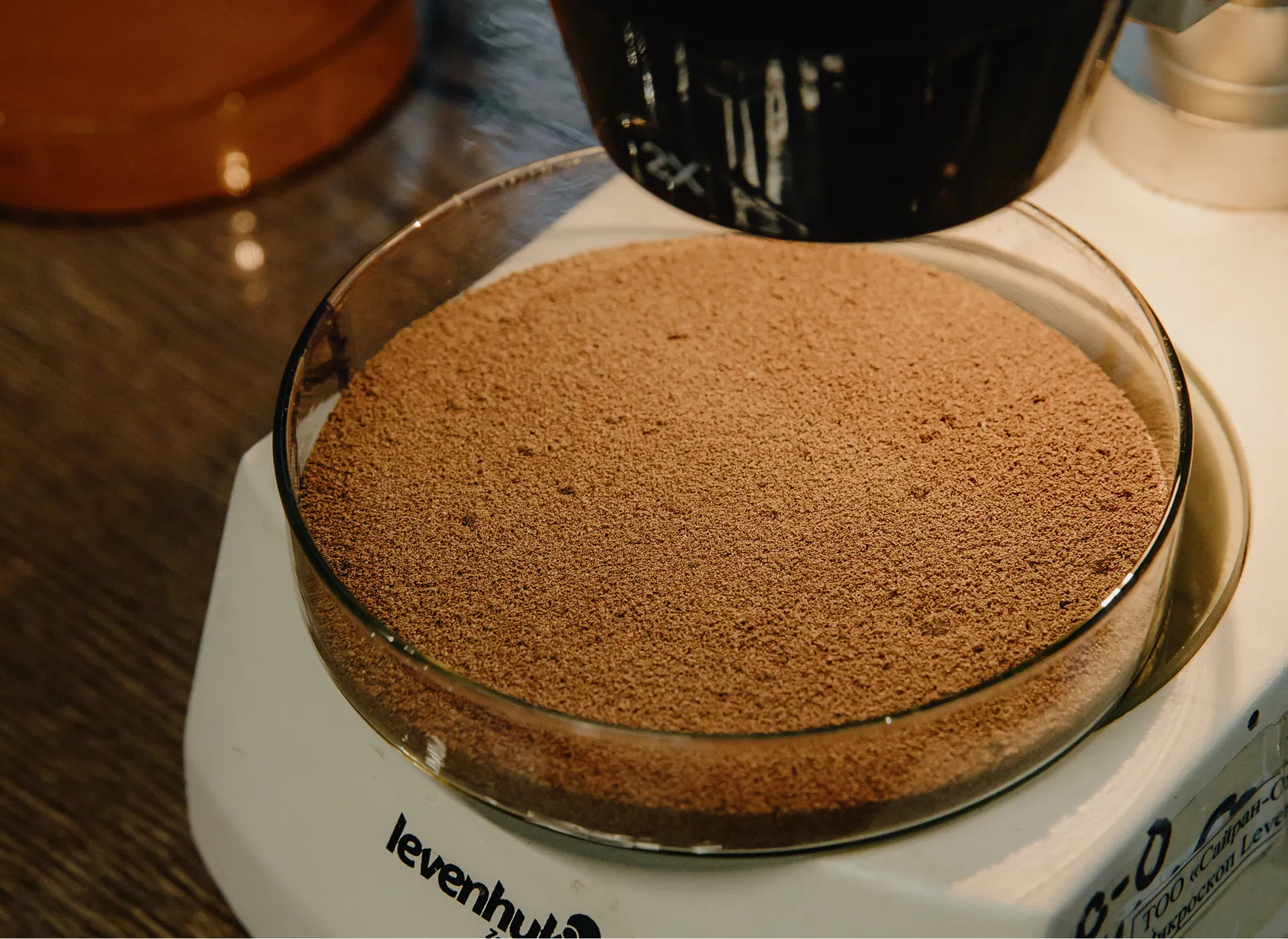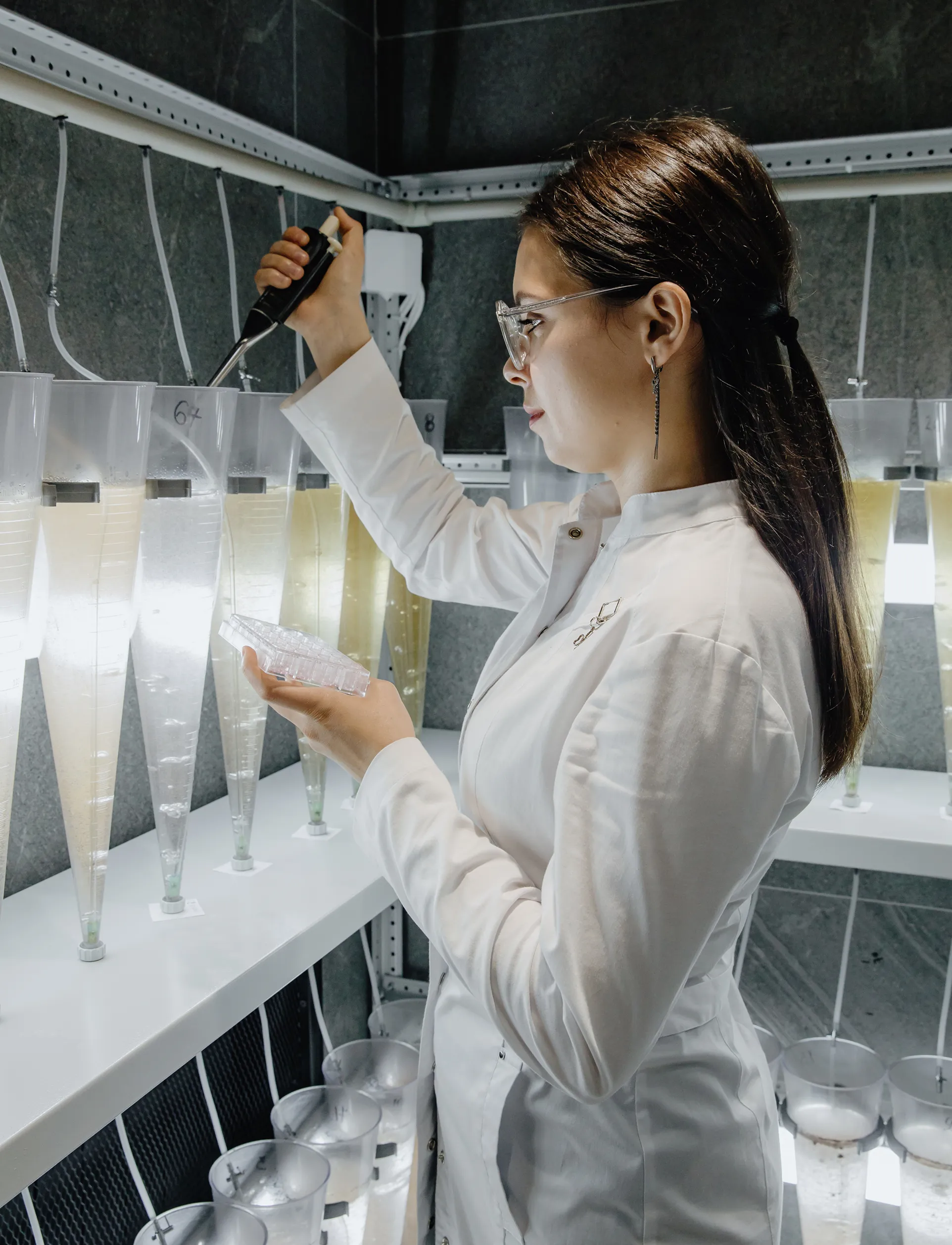Refractometers and hydrometers - monitor solution salinity with ±0.1 ppt accuracy
Next-generation pH meters - track acidity at all processing stages
Moisture analyzers - ensure ≤8% water content in final products
Weiss flasks with climate control - standardized hatching tests
Counting chambers - nauplii quantification under microscope (±2% accuracy)
Thermostats - maintain 28±0.5°C during testing
1000x magnification microscopes with cameras - detect shell defects
Peroxide and activator reagent kits - comprehensive analysis
Sterile hoods - prevent sample contamination
Complete Batch Testing Cycle
We collect minimum 3 samples from different batch points for:
– Microscopic analysis (1000x magnification)
– Test incubation in Weiss flasks
– Chemical composition analysis
Compliance with International Protocols
All research follows standards:
– ISO 6579 (Salmonella detection)
– ISO 16649 (E. coli analysis)
– HACCP certification
Measurement Precision with Advanced Equipment
Analytical balances ensure ≤0.01g weighing error. Our moisture analyzers provide ±0.5% accuracy - critical for determining shelf life.




